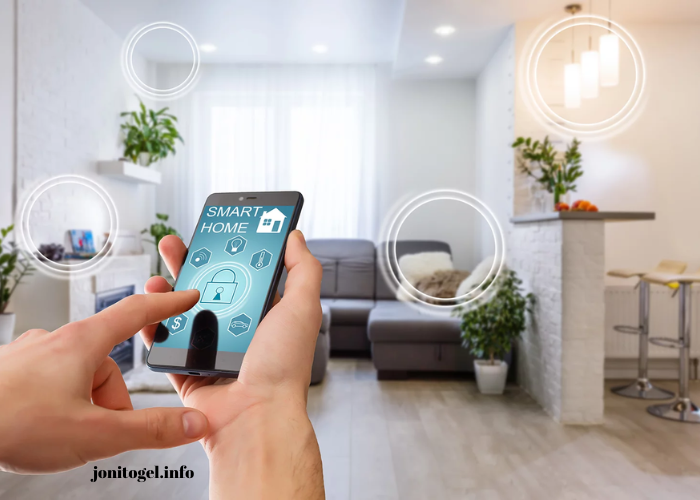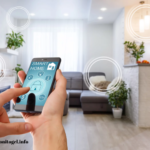In today’s rapidly evolving technological landscape, the concept of a smart home has transcended from a futuristic dream to a tangible reality. Smart home integration, where technology seamlessly blends with everyday living, is not just about convenience; it’s about creating an environment that enhances comfort, security, and efficiency. This article delves into the intricacies of smart home integration, exploring how technology meets comfort in ways that were once unimaginable.
The Evolution of Smart Home Technology
The journey of smart home technology began with simple automated systems like thermostats and lighting controls. Over the years, these technologies have evolved into sophisticated ecosystems that can control virtually every aspect of a home. The rise of the Internet of Things (IoT) has been a significant catalyst in this evolution, enabling devices to communicate with each other and with users through centralized platforms.
Today, smart home integration encompasses a wide range of devices and systems, including lighting, heating, ventilation, air conditioning (HVAC), security, entertainment, and even kitchen appliances. These devices are designed to work together harmoniously, creating a cohesive and responsive environment that adapts to the needs and preferences of the inhabitants.
Enhancing Comfort Through Automation
One of the primary benefits of smart home integration is the ability to enhance comfort through automation. Imagine waking up in the morning to a home that has already adjusted the thermostat to your preferred temperature, opened the blinds to let in natural light, and brewed your coffee—all without you lifting a finger. This level of automation not only simplifies daily routines but also creates a more comfortable living environment.
Smart thermostats, for example, learn your heating and cooling preferences over time and adjust settings automatically to maintain optimal comfort levels. They can even detect when you’re away from home and adjust the temperature to conserve energy, ensuring that your home is always at the perfect temperature when you return.
Similarly, smart lighting systems can be programmed to adjust brightness and color temperature based on the time of day or your specific activities. Whether you’re reading a book, watching a movie, or hosting a dinner party, the lighting can be tailored to create the perfect ambiance. These systems can also be controlled remotely through smartphone apps, allowing you to make adjustments from anywhere in the world.
Seamless Integration with Voice Assistants
Voice assistants like Amazon Alexa, Google Assistant, and Apple’s Siri have become integral components of smart home systems. These AI-powered assistants provide a hands-free way to control various smart devices, making the interaction with technology even more seamless. By simply speaking a command, you can adjust the thermostat, turn off the lights, lock the doors, or even play your favorite music.
The integration of voice assistants with smart home technology not only adds convenience but also enhances accessibility, particularly for individuals with mobility challenges. For example, elderly or disabled individuals can easily control their home environment without needing to physically interact with devices, thereby improving their quality of life and independence.
Security and Peace of Mind
In addition to comfort and convenience, smart home integration significantly enhances security. Modern smart security systems go beyond traditional alarm systems by offering features such as real-time video surveillance, motion detection, and remote monitoring. With smart cameras and doorbells, homeowners can see who is at the door or monitor their property from anywhere using their smartphone.
Smart locks provide an added layer of security by allowing homeowners to control access to their homes remotely. You can lock or unlock doors from your phone, grant temporary access to guests or service providers, and receive notifications whenever someone enters or leaves your home. These systems can also be integrated with other smart devices, such as lighting and alarms, to create a comprehensive security solution.
Moreover, smart home integration offers peace of mind through features like water leak detectors, smoke alarms, and carbon monoxide detectors that are connected to your smartphone. In the event of an emergency, you are immediately alerted, enabling you to take quick action, even if you’re not at home.
Energy Efficiency and Sustainability
Smart home integration is not only about enhancing comfort and security; it also plays a crucial role in promoting energy efficiency and sustainability. Smart devices are designed to optimize energy consumption, reducing waste and lowering utility bills. For example, smart thermostats and HVAC systems use sensors and data analysis to regulate temperature settings, ensuring that energy is used efficiently.
Similarly, smart lighting systems can automatically turn off lights in unoccupied rooms, while smart appliances like refrigerators and washing machines can schedule operations during off-peak hours to minimize energy usage. These technologies contribute to a greener lifestyle by reducing the overall carbon footprint of the household.
Furthermore, smart home systems can be integrated with renewable energy sources, such as solar panels, to maximize energy efficiency. By monitoring energy production and consumption in real-time, homeowners can make informed decisions about when to use stored energy, sell excess energy back to the grid, or adjust their consumption habits.
The Future of Smart Home Integration
As technology continues to advance, the future of smart home integration looks promising. Artificial intelligence (AI) and machine learning are expected to play an even greater role in making homes smarter and more intuitive. Future smart homes will not only respond to commands but will also anticipate needs and preferences based on patterns and data analysis.
For instance, AI-driven systems could learn your daily routines and automatically adjust settinimpgs without any manual input. Your home could prepare for your arrival by adjusting the temperature, turning on the lights, and even starting your favorite playlist. Additionally, advancements in voice recognition and natural language processing will make interactions with smart home systems even more fluid and personalized.
The integration of augmented reality (AR) and virtual reality (VR) technologies could also revolutionize smart home design and management. Homeowners might be able to visualize and interact with their smart home systems in a virtual environment, making it easier to configure settings, monitor energy usage, and control devices.
Moreover, as the adoption of 5G technology becomes widespread, smart home systems will benefit from faster and more reliable connectivity. This will enable real-time communication between devices and reduce latency, further enhancing the efficiency and responsiveness of smart home systems.
Challenges and Considerations
Despite the numerous benefits of smart home integration, there are also challenges and considerations to keep in mind. Privacy and security concerns are among the top issues, as smart home systems often involve the collection and transmission of personal data. It’s essential for homeowners to ensure that their smart devices are equipped with robust security measures, such as encryption and regular software updates, to protect against cyber threats.
Additionally, the interoperability of different smart devices can be a challenge, as not all devices are compatible with each other or with certain platforms. Homeowners should carefully research and choose devices that are compatible with their existing systems to avoid integration issues.
Finally, the cost of smart home integration can be a barrier for some homeowners. While prices for smart devices have been decreasing, the initial investment for a fully integrated smart home system can still be significant. However, the long-term benefits in terms of energy savings, security, and convenience often justify the investment.
Conclusion
Smart home integration represents the perfect marriage of technology and comfort, transforming the way we live and interact with our homes. By automating routine tasks, enhancing security, and promoting energy efficiency, smart home systems create an environment that is not only more convenient but also more sustainable and secure. As technology continues to evolve, the possibilities for smart home integration are limitless, promising even greater comfort, convenience, and connectivity in the future.






